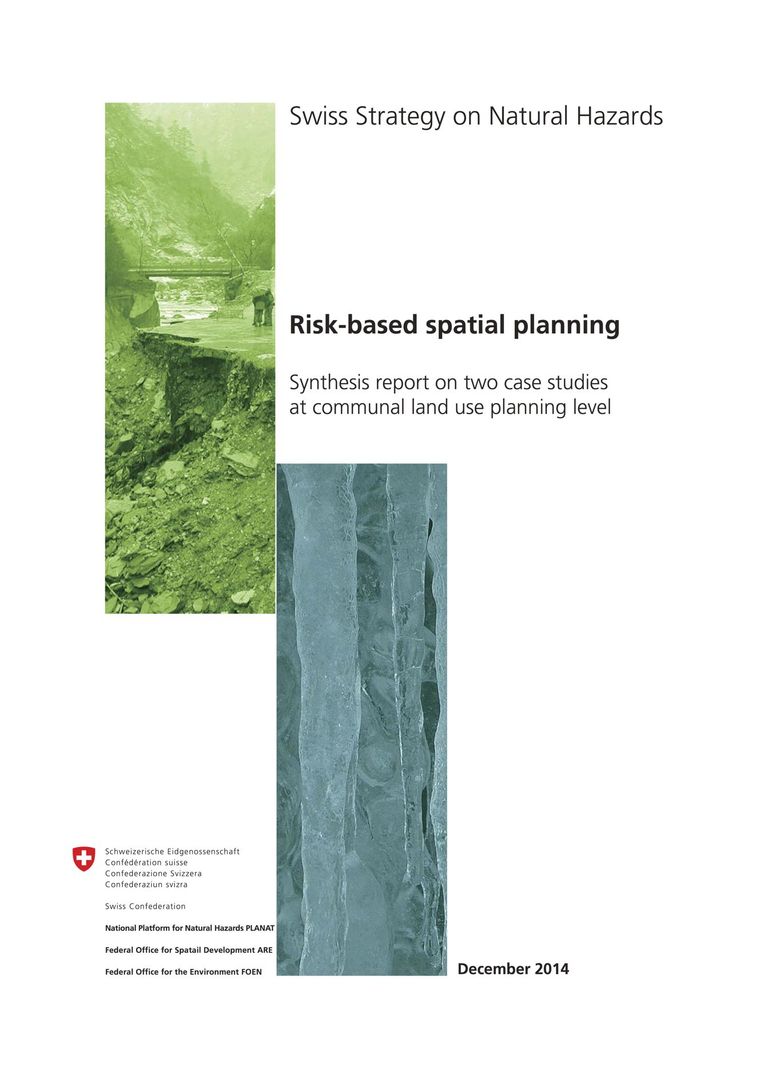Risk-based spatial planning
Synthesis report on two case studies at communal land use planning level
The damage caused by natural hazards has risen steadily in recent decades, despite considerable expenditure on defences. One reason is an ever denser and more intensive use of space, and the extension of land usage to hazard areas.

A change of perspective is required to limit the increase in risk and the rising cost of damage. The focus must be shifted more towards land use and the associated potential damage.
Two case studies were conducted to determine the finer points of a risk-based approach to spatial planning. The synthesis report presents the case studies, summarises their key findings, lists the open questions, and provides an outlook for the next steps. The repoort provides an overview. It is aimed at planners, experts in natural hazards and others involved on the implementation side of spatial planning.
The analysis of case studies on risk-based spatial planning showed that the approach has specific practical applications, and that existing data and documentation on natural hazards can be put to good, targeted use. It is also clear from the studies that the earlier that risk-based planning is incorporated in the overall planning process, the greater the scope for planning action. At this stage, alternative sites can be explored, or land use adapted in the best possible way to the risk situation. The scope for action contracts as the process progresses, but effective options are still available. The case studies represent the first steps towards a systematic approach to evaluating existing or planned land uses.
At the same time, an effort must be made to awaken interest in risk-based spatial planning. The actors concerned, such as representatives of communal and cantonal authorities, planning offices and insurance companies must be shown the need for a more conscious way of dealing with hazards and risks. Greater support is also required to ensure close cooperation between planners and experts in natural hazards. This must also include those who actually bear the risk. The concept of risk-based spatial planning should not be restricted to land use planning alone, but should be applied at all levels of the planning process – structural plans, land use planning, and building permit proceedings.
The plan for the next step is to take the findings from this andother current projects on risk-based spatial planning as input for a new set of guidelines.
Source: Camenzind, Reto; Loat, Roberto 2014: Risk-based spatial planning: Synthesis report on two case studies at communal land use planning level. National Platform for Natural Hazards / Federal Office for Spatial Development / Federal Office for the Environment, Bern. 21p.

